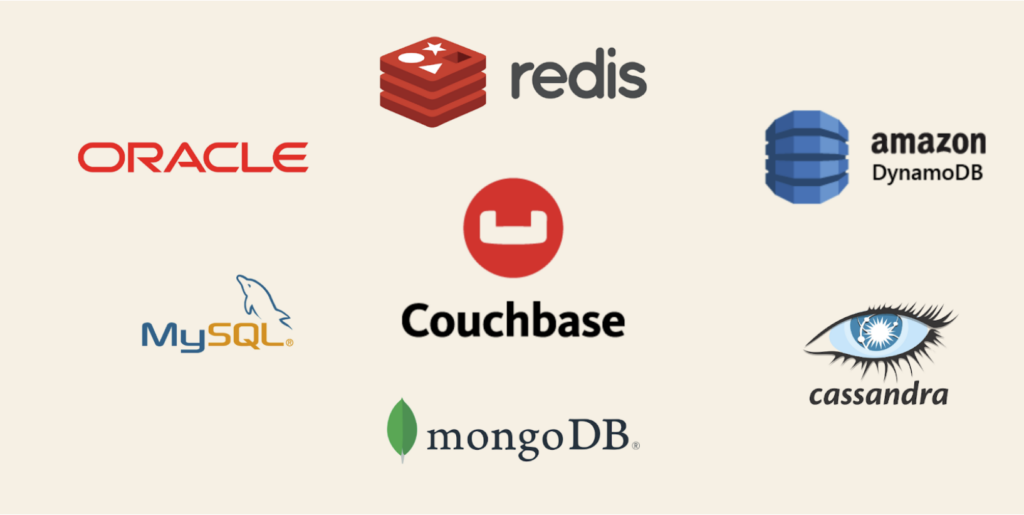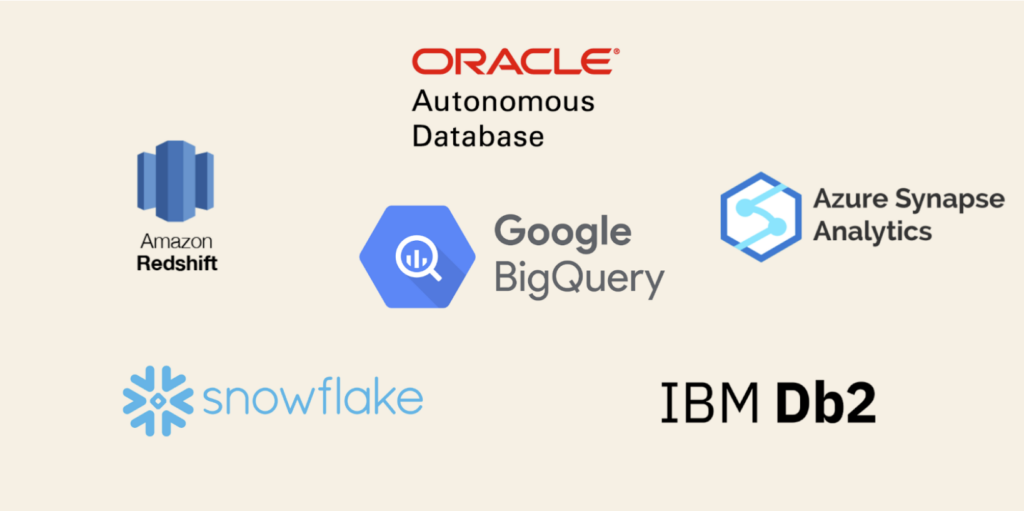The explosion of data in the digital age has created a pressing need for organizations to efficiently store, manage, and analyze vast amounts of information. Databases and data warehouses are crucial tools that help businesses make sense of their data and gain insight into their operations, customers, and markets. While both databases and data warehouses are designed to store data, they have distinct differences in structure, purpose, and functionality.
In this article, we will explore the key differences between databases and data warehouses, their respective use cases, and provide examples of how they are used in different industries.
What is a Database?
A database is a collection of data organized to make it easy to access, manage, and update. The data is typically stored in digital form on a computer or server and is organized into tables or other structures that allow it to be searched, sorted, filtered, and manipulated in various ways.
A database uses a database management system (DBMS) to create, manage, and manipulate the data stored in the database. The DBMS serves as an interface between the database and the user, allowing users to interact with the data and perform tasks such as adding, modifying, deleting, and querying data.
You can read more about databases in Couchbase’s Database Advice Guide.
What is a Data Warehouse?
A data warehouse is a system specifically designed to support business intelligence (BI) activities such as reporting, data analysis, and data mining. It stores a large amount of data that is structured in a way optimized for OLAP (Online Analytical Processing) rather than OLTP (Online Transaction Processing).
The data in a data warehouse is aggregated and integrated into a single location from multiple sources, including transactional databases, external sources, and other data warehouses. It is typically stored in a dimensional model, which organizes data into fact and dimension tables. Fact tables contain quantitative data, such as sales figures, inventory levels, or customer interactions, while dimension tables contain descriptive data, such as product names, customer demographics, or time periods. This dimensional model enables users to analyze data from different perspectives and drill down into specific areas of interest.
Database Use Cases
Databases are used in a wide range of industries and applications. Here are some common database use cases:
Transaction processing: Databases are primarily designed for transaction processing, which involves capturing, storing, and managing operational data in real time. This includes applications such as online transaction processing (OLTP) systems, point-of-sale systems, and inventory management systems.
Content management: Databases are also commonly used for content management, allowing organizations to store and manage large volumes of digital content, such as images, videos, and documents.
Customer relationship management: Databases can be used to store and manage customer data, allowing organizations to develop a comprehensive view of their customers and their interactions with the organization. This can help organizations to improve customer satisfaction, develop targeted marketing campaigns, and improve customer retention.
Human resources management: Databases can be used to store and manage employee data, including personal information, employment history, and performance data. This can help organizations manage their human resources more effectively and make better-informed decisions on hiring, promotions, and other personnel issues.
Database Examples
In this section, we’ll explore some examples of databases and how they’re used in different industries and applications. The image below shows some popular databases.

-
- Couchbase: Couchbase is a NoSQL document-oriented database designed for high performance, scalability, and flexibility. It can be used as a key-value store or as a document database and supports distributed architecture with built-in replication and synchronization. Couchbase is commonly used in web, mobile, and IoT (Internet of Things) applications. It also supports flexible data modeling with JSON documents and integrates with various programming languages and frameworks. Read more about how it stacks up to other NoSQL databases here.
- MySQL: MySQL is an open-source relational database management system widely used for web applications. It’s well-known for its scalability and performance.
- Oracle: Oracle is a commercial relational database management system widely used in enterprise applications. It is known for its robustness, security, and high availability.
- MongoDB: MongoDB is a NoSQL document-oriented database designed for scalability and flexibility. It is commonly used in web applications and mobile applications.
- Cassandra: Cassandra is a distributed NoSQL database designed for high availability and scalability. It is commonly used in large-scale web and IoT (Internet of Things) applications.
- Redis: Redis is an in-memory key-value store commonly used as a database, cache, and message broker. It is known for its high performance and scalability.
- Amazon DynamoDB: Amazon DynamoDB is a fully managed NoSQL database service designed for scalability and low latency. It is commonly used in web applications and mobile applications.
Data Warehouse Use Cases
Data warehouses are used in various industries and applications. Here are some common use cases for data warehouses:
Business intelligence: Data warehouses support business intelligence activities such as data analysis, reporting, and data mining. They provide a consolidated view of data from multiple sources, making it easier for organizations to gain insights into their operations and make informed decisions.
Sales and marketing: Data warehouses store and analyze sales, customer, and marketing data. This information can be used to track sales performance, identify trends, and develop targeted marketing campaigns.
Retail: Data warehouses store and analyze sales, inventory, and customer data. They can support merchandising, inventory management, and customer relationship management.
Customer analytics: Data warehouses can consolidate customer data from multiple sources, allowing organizations to view their customers and their behavior comprehensively. This can help organizations to develop targeted marketing strategies and improve customer satisfaction.
Data Warehouse Examples
There are many data warehouse solutions available, each with its strengths and weaknesses. In this section, we’ll explore some examples of data warehouses and their use cases. The image below shows some popular data warehouse solutions.

-
- Amazon Redshift: Amazon Redshift is a cloud-based data warehouse service designed for scalability and cost-effectiveness. It is commonly used in big data applications and can support petabyte-scale data warehousing.
- Snowflake: Snowflake is a cloud-based data warehouse designed for scalability, performance, and ease of use. It supports multiple data sources and can handle both structured and semi-structured data.
- Microsoft Azure Synapse Analytics: Microsoft Azure Synapse Analytics is a cloud-based data warehousing service designed for big data analytics. It integrates with various Azure services and supports both structured and unstructured data.
- Google BigQuery: Google BigQuery is a cloud-based data warehousing service designed for big data analytics. It uses a columnar storage format and supports SQL queries and machine learning.
- Oracle Autonomous Data Warehouse: Oracle Autonomous Data Warehouse is a cloud-based data warehouse service designed for high performance, security, and availability. It supports various data sources and can handle structured, semi-structured, and unstructured data.
- IBM Db2 Warehouse: IBM Db2 Warehouse is a cloud-based data warehouse service designed for high performance and scalability. It supports various data sources and can handle both structured and unstructured data.
Database vs. Data Warehouse
The differences between a database and a data warehouse can sometimes be confusing, as they both involve storing and managing data within a system. However, they serve different purposes and are optimized for different types of data processing and analysis. In this section, we’ll compare the main differences between a database and a data warehouse with examples to help clarify the distinctions between these two types of data storage and management systems.
| Database | Data Warehouse | |
| Purpose | Designed for transactional processing and operational data | Designed for analytical processing and historical data |
| Data Structure | Organized into tables with defined relationships | Organized into fact tables and dimension tables |
| Data Volume | Typically contains smaller amounts of data | Designed to handle large volumes of data |
| Data Latency | Real-time data updates and queries | Typically involves periodic data updates and batch processing |
| Data Use | Used for day-to-day operations and transactional processing | Used for business intelligence and data analysis |
| Query Complexity | Supports simpler queries involving smaller amounts of data | Supports complex queries involving large amounts of data |
| Data Quality | Focuses on data accuracy and consistency for operational use | Focuses on data completeness and validity for analytical use |
| Performance | Designed for high-speed transactional processing | Designed for fast query response times and data analysis |
| Examples | Customer databases, inventory management systems | Business intelligence systems, data warehousing solutions |
Databases and data warehouses serve different purposes when it comes to managing data. Databases are designed to capture and manage operational data in real time, while data warehouses are designed to store and analyze historical data to gain insights. A data warehouse is optimized for analytical processing and reporting, while a database is typically optimized for transactional processing.
Disadvantages of a Database
While databases offer many advantages, there are also some disadvantages to consider. The image below shows some common disadvantages of databases.
-
- Limited analytical tasks: Databases are often optimized for transactional processing and lack the specialized tools and functionality to perform complex analytical tasks, such as advanced statistical analysis, data mining, or machine learning. This limitation can be overcome by integrating a database with a data warehouse or other analytical system explicitly designed for complex data analysis and reporting.
- Data redundancy: Databases can sometimes suffer from data redundancy, where the same data is stored in multiple places, leading to inconsistencies and errors.
- Limited Scalability: Databases can struggle to scale to accommodate growing volumes of data or increasing numbers of users, leading to performance issues and downtime. You can learn more about how Couchbase’s cloud database platform tackles scalability issues here.
Disadvantages of a Data Warehouse
While data warehouses can provide many benefits, there are also some disadvantages you should be aware of. The image below shows some common disadvantages of data warehouses.
-
- Data latency: Data warehouses typically involve periodic data updates and batch processing, which can result in some degree of data latency or delay in the availability of the most up-to-date data.
- Integration challenges: Integrating data from multiple sources into a data warehouse can be challenging, requiring careful data modeling and transformation to ensure the data is accurate and consistent.
- Vendor lock-in: Data warehouses may require proprietary software or hardware, which can result in vendor lock-in and limit flexibility and interoperability with other systems.
- Data quality issues: Data warehouses can sometimes suffer from issues like incomplete or inaccurate data, leading to incorrect insights and analysis.
What Will Work Best for You?
Ulitimately, using a database vs. a data warehouse depends on the specific needs of the organization and the type of data being managed. Here are some factors to consider when choosing between a database and a data warehouse:
-
- Data volume: If the organization is dealing with large volumes of data, a data warehouse may be more appropriate as it is designed to handle and analyze large amounts of data.
- Data complexity: If the data is complex and requires a lot of processing, a data warehouse may be more appropriate as it is optimized for complex queries and analysis.
- Real-time vs. historical data: If the data needs to be accessed in real-time, a database may be more appropriate as it is designed for transactional processing. A data warehouse may be more suitable if the data is historical and used for analysis.
- Reporting and analytics: If the organization needs to perform business intelligence activities such as reporting and analytics, a data warehouse may be more appropriate as it is optimized for these activities.
- Cost: The cost of implementing and maintaining a database or data warehouse should be considered, as both options can be expensive depending on the size and complexity of the data.
Ultimately, whether to use a database or a data warehouse depends on the specific needs and requirements of the organization. In some cases, a combination of both may be the best solution, with a database used for transactional processing and a data warehouse for reporting and analytics.
If you’re considering investing in a database, you can take this assessment that will help you further determine your needs. You can look at this list of Couchbase offerings and their pricing plans if you already know your needs and are ready to learn more.
